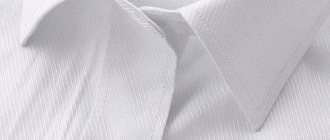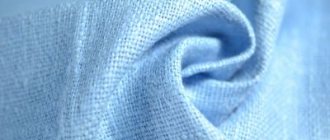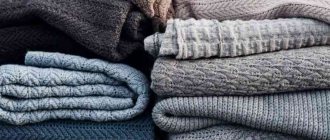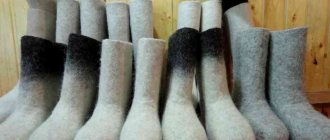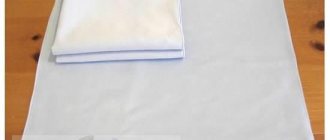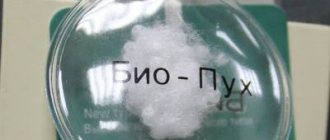Share on social media networks:
Colored things are elegant, beautiful and bring bright colors to ordinary gray everyday life, but they require very careful handling. It can be very disappointing and unpleasant when the clothes you love fade. This happens with clothes from well-known brands and reliable companies. It is especially unpleasant when such an item, when washed, also renders other items that were in the washing machine unusable. In our article, we will consider which things and fabrics are most often dyed, as well as how and what to wash them with, so that they bring you joy for a long time.
Removing faded stains from colored fabrics
The situation is somewhat more complicated with how to remove stains from colored fabrics. In this case, it is necessary not only to remove the paint, but also to preserve the original color of the product.
Even if something can still be done with the stain itself, after color loss, it is usually not possible to completely restore the shades.
The first aid when detecting color distortion is to re-wash. Things need to be sorted out and re-washed at a temperature not exceeding 60°.
While the paint has not yet sunk in, you can rinse it off. Be sure to look at the information on the labels: some types of fabrics cannot be washed in hot water.
If the temperature on the label is 30° or 40°, then you need to rely on these numbers. You should not wash a synthetic tracksuit in too hot water.
Another option for getting rid of stains is to use special bleaches and stain removers for colored items.
To return the color to faded items, you can add special restorative agents when re-washing; they will allow you to recreate the original tone of the items.
When using the products, you must follow the instructions.
You can restore the colors to their former brightness using ammonia. 200 ml of 10% concentration are diluted in 5 liters of hot water.
Faded items are soaked in the resulting solution. After an hour, they are removed from the basin, thoroughly rinsed and dried.
For things of two colors, for example, in black and white, this method is suitable: brew 2 liters of green tea, strain and filter it.
Damaged clothing is soaked in tea. After 15 minutes, take it out and cover the light spots with salt. After another quarter of an hour, things are washed.
For woolen products, such as sweaters, it is optimal to use laundry soap. It is enough to wet the stains, rub them with soap, and after a while completely wash and rinse the product.
The most radical and extreme method of getting rid of faded stains or foreign colors is re-dyeing.
In this case, choose a paint of a darker shade. It can be noted that natural fabrics are dyed easily and firmly, while synthetics are difficult to re-tint. Stores sell special fabric dyes.
When using them, you must strictly follow the instructions and wear gloves.
After tinting, the first few washes should be done separately from other items.
Sorting laundry of the same color
In this case, you need to look at the information from the manufacturer, which is indicated on the label. You can make this procedure easier using a number of general rules:
- look at what the thing is made of;
- do not ignore the specified temperature and washing mode;
- Choose your powder and special detergents wisely.
Sorting by color is important, but items also need to be sorted by fabric type.
Washing without shedding
To prevent the fabric from fading, you need to follow certain rules. By following the instructions for hand and machine washing, you will be able to clean even the most brightly colored items without loss.
Manually
After preparing the product, you can begin the main procedure. To prevent the pigment from being washed out of the fabric fibers, follow the following algorithm:
- Before placing an item in a basin, you need to study the information on the product label. Do not violate the recommendations specified by the manufacturer.
- Be sure to check all pockets to ensure there are no small items left in them.
- If at the preparation stage it turns out that the item is prone to molting, use cool water, 10 degrees lower than recommended.
- It is better to use a powder designed for hand washing colored items. The packaging should contain the inscription “Color” and an image of a basin with a palm lowered into it.
- The powder or gel must be completely dissolved in water.
- If soaking is required, its time is reduced to a minimum.
- Do not press or rub the item too hard with a brush or your hands.
- Rinse clothes first in warm and then in cool water.
The detergent should not contain bleaching components, which will help wash out the pigment.
This video will show you how to wash faded items by hand:
In the typewriter
You need to wash fading items separately from the rest, since it is impossible to control the process of pigment leaching. Guide to action:
Sort products by color and texture.- Pour detergent intended for washing colored items into the powder compartment.
If gel is used, it can be poured directly into the drum, on top of the clothes placed inside. Capsules are used in a similar way, only they are placed under the product to be washed. - Set washing parameters. The water temperature should not exceed 30-40 degrees. It is recommended to spin at the lowest possible speed. If necessary, activate the additional rinse function. You can use the “gentle wash” mode.
- Immediately after washing, the items are removed from the drum. The longer they remain wet, the less strong the dye's adhesion to the fabric becomes.
If the fabric has complex stains, you can use a stain remover, but apply it in moderation. The exposure time should not exceed 30 minutes.
On sale you can find special napkins that absorb pigment that is washed out of colored items.
Thanks to their use, you can wash faded and regular items at the same time, but if the fabric loses dye very actively, the napkins may not cope with their function.
Detergent
How to wash something so it doesn't fade? Detergent will play an important role in this. Among the current abundance, it is very difficult to choose the most suitable one; experts advise adhering to the following criteria:
- so that the fiber does not fade, it is better to give preference to liquid or gel-like, powders will contribute to the release of color;
- universal products will not help preserve the color, the products will gradually fade;
- It’s worth buying several detergents separately, one for white, the second for black, the third for color, each of them will have a special marking;
- It is strictly prohibited to use chlorine-containing bleaches for colors and blacks; they may not be able to remove the stain, but they will definitely remove the color;
- oxygen stain removers are used for clothes that have become dirty only after testing;
Advice! It is better to remove heavy stains using improvised means, having previously tested them on an invisible area. Whatever fabric does not fade during trial processing will not change color when removing dirt.
Do not neglect the choice of detergent; a lot depends on it.
Helpful information
To prevent washing colored items from causing damage, you must adhere to the following recommendations:
- For hand washing, you should not use soap and soda, as they help wash out the pigment.
- Preference should be given to liquid detergents, as they dissolve better in cool water and are more easily washed out of fabric fibers.
- When washing, you can use fabric softener. It helps things maintain color saturation.
You will find maximum useful information about washing clothes and various fabric products here.
Preparation for the process
Before you start the main wash, things need to be sorted.
A few basic rules:
- white and black are washed separately;
- black fabrics can be washed together with dark blue and dark gray laundry;
- It is permissible to load things of warm shades into the machine together: pink, yellow, orange, but provided that the colors are similar and the paint is pre-fixed;
- Blue, purple and green fabrics can be washed together.
Do not wash white things with colored ones, even if they have light shades, but they fade.
Fixing the coloring pigment
To prevent fading items from being damaged during the washing process, you need to focus your efforts on fixing the color. This can be done in several ways:
Soaking items in saline solution. To prepare it you will need 2 tbsp. l. salt and 1 liter of water. The product is soaked for an hour, after which it is thoroughly rinsed.- Fixing the color with acetic acid. For 10 liters of water you will need 5 tbsp. l. acids. The fabric should remain in this solution for at least half an hour.
- Rinsing off excess paint. To begin, place the fabric in a bowl of warm water, leave for 10 minutes, then rinse in cool water. This will remove excess pigment.
Be sure to treat new items before the first wash.
Checking color strength
After purchasing a new wardrobe item, you do not know whether it will change color during washing or not. To avoid any unpleasant surprises for you, you need to conduct quality testing and understand what items and fabrics are dyed.
First option:
- A small piece of clothing needs to be wetted.
- Iron the wet area through the paper.
- If there are stains on the paper, the product may fade.
Second option:
- Cut a small piece of fabric near the seam on the wrong side.
- Soak it in ammonia.
- Wait 10 minutes, then rinse.
- Check if the color has changed.
Distribution by functional features
The final stage of sorting will be identification by functional features. Most of these rules are known to everyone, since they are quite logical, but it will not hurt to familiarize yourself with them:
Bad combination .
Shoes, such as sneakers, are always washed separately. Children's clothing is sent to a separate category. Curtains, curtains, blankets, blankets, jackets and down jackets - separately. Heavily soiled items and those that require light washing are also separated.- Good combination . Bed linen belongs to a separate category; it is permissible to add terry towels. Jeans - only with socks. The rest is selected according to shade, material, and total weight.
Caring for shoes to prevent paint from peeling off
Unfortunately, even expensive branded shoes often leave marks on light-colored tights. More precisely, not the shoes themselves, but the material with which the inside of shoes or boots is covered. It happens that not only the stockings are painted, but also the legs, so much so that you can only wipe the paint off the heels with a pumice stone. The situation is so common that manufacturers produce special products to combat this:
- Aerosol "AntiColor" from
- Aerosol "Salamander"
- etc.
If such a defect is discovered immediately after purchasing the shoes, it may cause it to be returned to the store. At home, try fixing the dye with hairspray. Spray the inside of the shoes, let the polish dry, and then wipe the inside of the shoes with flannel. However, this procedure cannot guarantee a 100% result.
We can only remind you once again how important it is to check the durability of the paint of shoes or clothing before purchasing.
White and colored items cannot be washed together. But sometimes it happens that some colorful little thing unnoticed gets into the machine along with a snow-white product. As a result, your favorite clothes may take on a somewhat extravagant appearance, which is unlikely to please its owner. If things are dyed during washing, there are many ways to return them to their original appearance, although this is not always easy.
There is no need to get too upset and throw away the painted item or turn it into workwear for the garden.
There are several simple and effective methods, the immediate use of which will help restore your previous color.
- Act quickly. Do not let the affected clothing dry, much less iron it. Drying at high temperatures will only set the paint, making subsequent removal more difficult or even impossible.
- Digestion is not suitable for every material. Many fabrics, especially synthetic ones, become deformed during aggressive heat treatment. In this case, it will not be possible to return things to their former attractiveness.
- After an unsuccessful wash, try washing the dyed clothes again, but now exclude all suspicious materials, or better yet, wash them separately. Use an active washing powder and set the temperature to close to 60˚C, but no more than the clothing tag allows.
- If white fabric is damaged, add oxygen-containing bleach to machine wash. Soak in white if the material is able to safely survive such a procedure.

